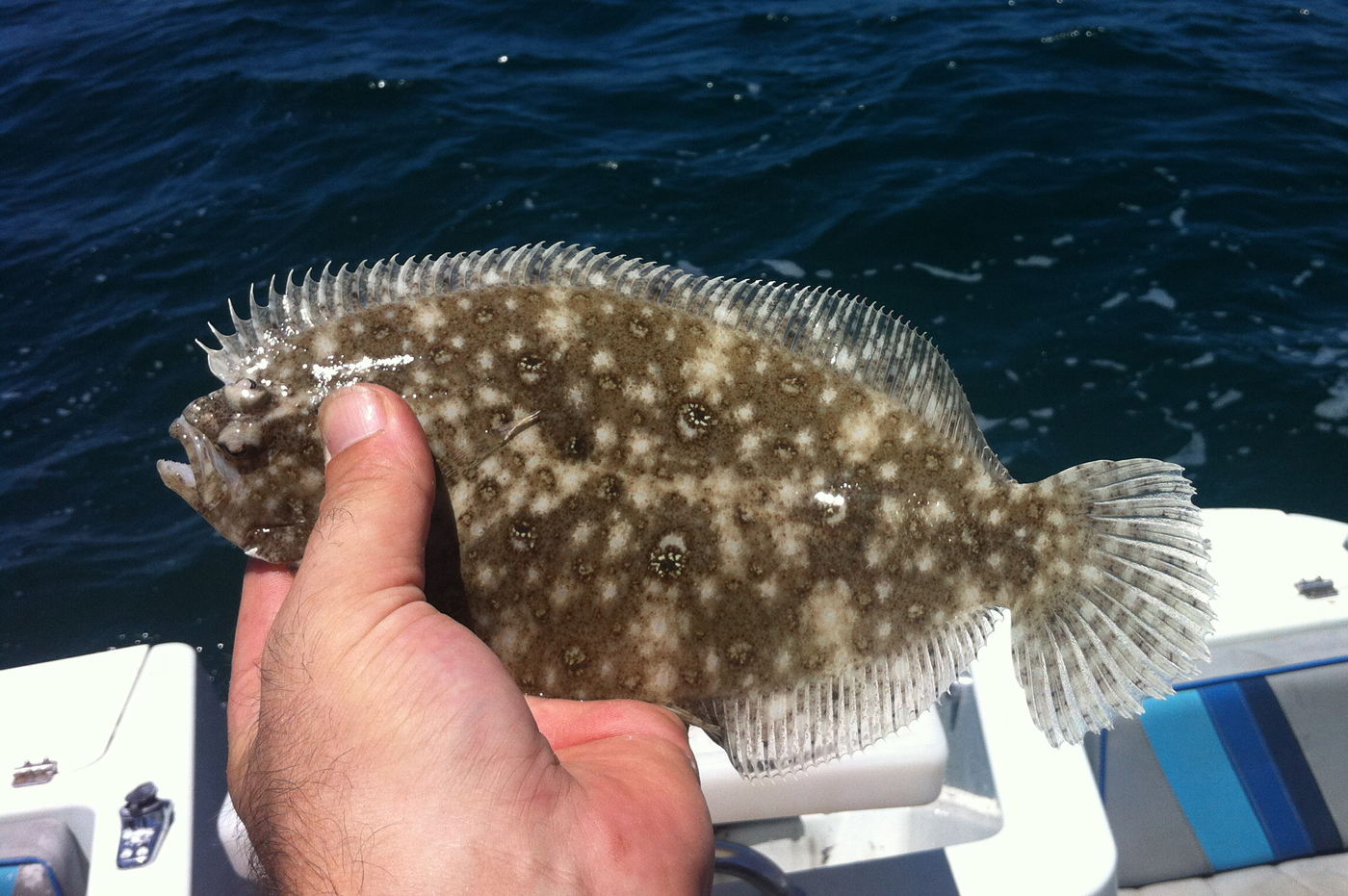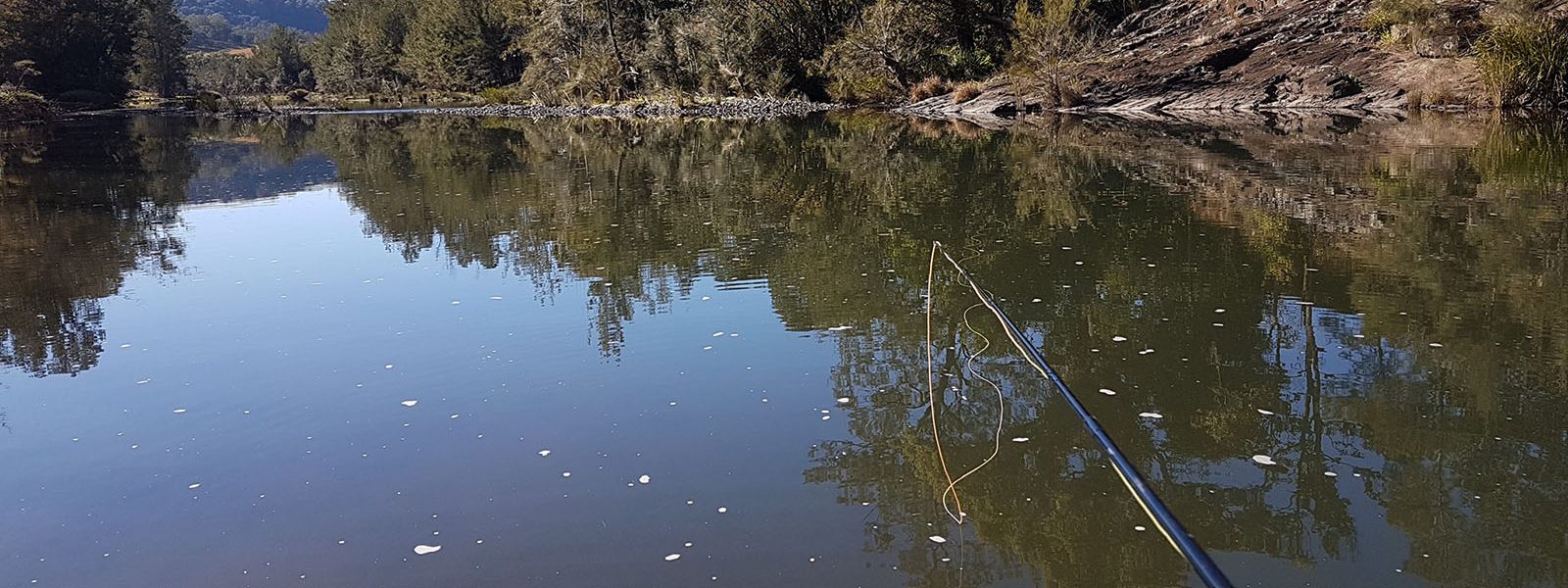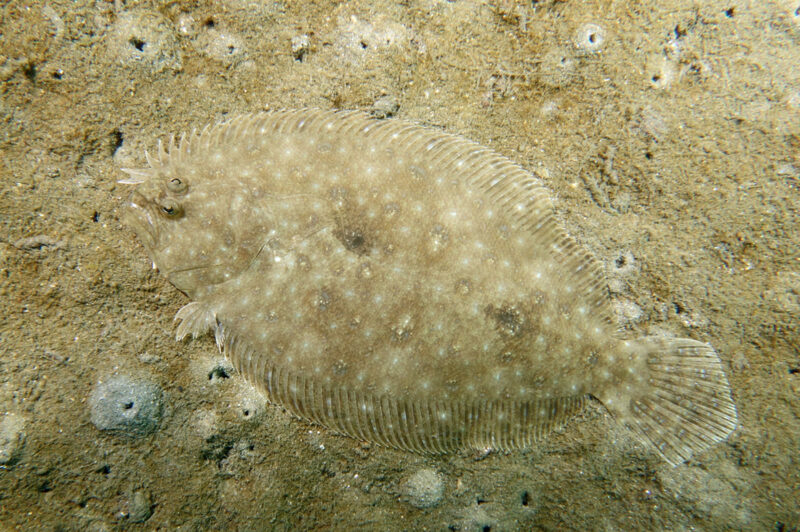Flounder
Often misidentified as sole, the two flounder we are most likely to encounter in our area are the Small-toothed Flounder (Pseudorhombus jenynsii) and the Large-toothed Flounder (Pseudorhombus arsius).
Flounder prefer areas of mixed sand, weed and rock with good numbers of small bait fish present and access to deeper water nearby. They are commonly found in bays and estuaries in the local area and are usually a bi-catch when fishing for other species on sand flats. Flounder are a difficult species to target specifically and this can give the false impression that they are fairly rare.

Flounder are laterally flattened bottom dwellers with both eyes on one side. Early in its development, the fish has eyes on both sides of its head. Once the tiny larva settles on the bottom, however, the right eye migrates to the left side of its head (in some other flounder species the left eye moves) until the fish can lie flat on one side of its body on the bottom, but with both eyes looking upwards. They have distinct colouration such as spots, irregular blotches and rings on one side of their body with the other being pale. They range in total length from 34cm to approximately 55cm.
Flounder are easy to handle and have no spines present. However, the Large-tooth Flounder has an impressive set of teeth in the front of its jaws, and you should be wary when removing flies from the mouth this species. Apart from the obvious dental difference it is best separated from the small-toothed member of its genus by the presence of two dark spots placed centrally on its dorsal surface. The first is located just behind the pectoral fin, the second is halfway between the first spot and the tail fin.
Like Flathead, the flounder is an ambush predator and flies such as Clousers, Crazy Charlies or any shrimp imitation that stays on or near the bottom will attract them. Rising or full tides are best suited for targeting flounder around most areas. Full moon phases are also preferable for flounder with much higher tidal movements better suited to this species.

